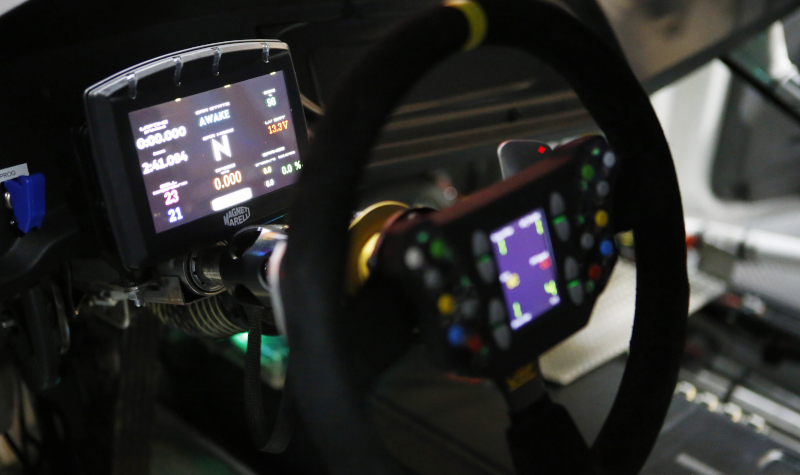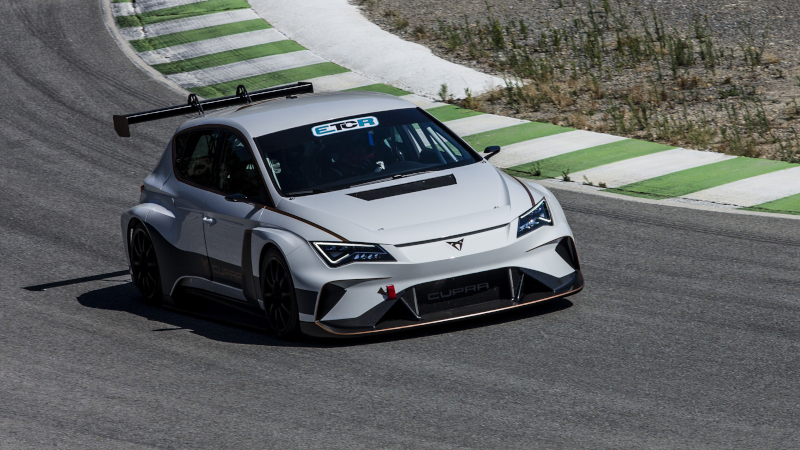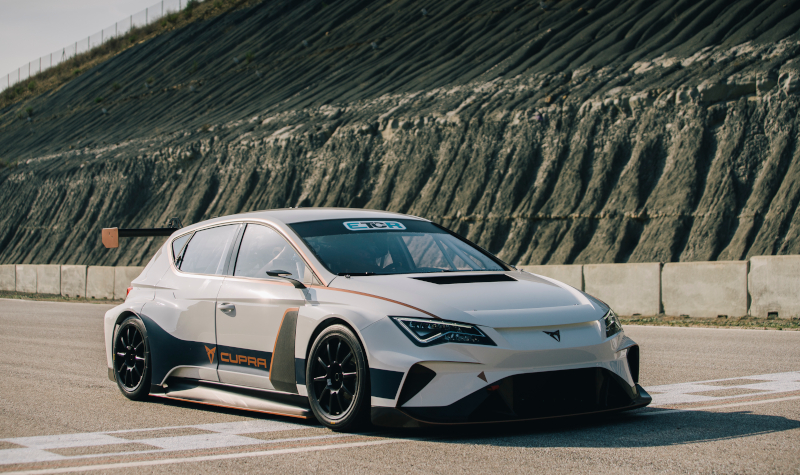CUPRA test and development driver Jordi Gené has described the acceleration and power of the new CUPRA E-Racer TCR car as ‘brutal’ as the Spanish manufacturer continues to develop its revolutionary new racing car.
Gené has been a factory SEAT driver since 2003, and during the past 15 years the Spaniard has been involved in almost all of SEAT’s racing programmes.
Now the 47-year-old has been getting involved in the development of sister brand CUPRA’s new electric touring car, which is set to compete in the new E-TCR series from 2020 onwards.
Gené explained some of the differences of the new car, and how drivers and teams will have to adapt to different challenges compared to the traditional combustion-engined touring car.
“Everything is very new and to understand it well you have to take a step back, not taking anything for granted regardless of how much experience you may have,” said Gené. “[You have to] get know it from the base to work from there.
“I didn’t know the technology we are working with and there are many new things, things that did not happen until now, such as the car emitting smoke when you are cooling down.
“You have to know what is happening in every moment, because the management of temperatures is possibly one of the most difficult parts to manage. It is one of the most critical characteristics of electric cars and on which we have to work more pilots.
“There are other things that are very shocking at the beginning, for example, the ability to accelerate. It is brutal, like a Scalextric car, when you hit the button it goes off and disappears on the straights. In this car it is the same and the driver must be prepared for such a power.”
Gené believes that the car will be more difficult for drivers to adapt to, as more work will be required with engineers setting the car up for optimal performance.
“Driving this car is more difficult in general. For example, in cornering, when you arrive at the apex you have to brake a little more because you carry more weight.
“That’s where the work of the driver comes in, of the set-up that you have to finely tune for this weight, which is very well distributed because you have it centred and very low, doesn’t play any tricks nor compromise your work.
“This weight is more noticeable in the long corners, in which the car has a marked and clear tendency to open at the exit of the curve.
“However, when the straight comes, it accelerates a lot, and what you have sacrificed applying more braking, it´s compensated. It’s a different driving strategy, a different driving.

“There are many more tools than in a conventional car. You have different ways of regenerating energy and you have to optimize them all to get the greatest possible autonomy.
“In the race, you have to be very effective in this section to be able to reach the end of the race at a competitive level. All this, more or less, you can change from the steering wheel.
“You can ask that during braking, the car will charge the batteries more, or that it will only charge them when you lift the gas pedal without braking. You can even manage the traction control of each wheel separately…
“There are many factors that you can change from the steering wheel at any given time. This makes the driver have to think a lot more and all this keeps you always more in suspense, so it won’t be easy.
“Controlling not only the level of battery charge, but the cells’ temperature, the engines’ temperature… Until all this information and the work required to achieve optimal performance is not more automated the driver will have to be watching it and acting immediately.
“In addition to the typical racing car dashboard, we have another screen on the steering wheel where we can change many operating parameters.”
The Spaniard says that when the new era of electric touring cars starts in anger the approach of teams and drivers will have to change to suit the demands and characteristics of the new breed of racing cars.
“What is more complicated is everything related to the management of energy and the new electronics. In an electric racing car many factors change.
“We are used to combustion cars, to going out for ten laps thoroughly and the only thing that changes in that time is the tyre degradation and the effectiveness of the brakes in any situation.
“With the e-Racer the strategy starts from the same pit exit, and you will pay it in the last lap if you have done something wrong.
“In addition, all these factors change the behaviour of the car. If you regenerate more energy, you have to compensate it with the braking balance because when you raise your foot off the accelerator you are slowing down the rear wheels with the electric engine.
“In addition, the acceleration changes depending on the chosen power mode. The car behaves differently and is very variable. The braking references change on each lap depending on the range of power and retention you are driving with, because you arrive at the apex at different speeds.
“In reality, for a driver this is a major challenge, much more than what it may seem from outside. It will be very interesting.”

Gené compared the experience of learning about the CUPRA E-Racer to that of his brother Marc [former Ferrari F1 test driver], who had to learn how to set up a car when the Kinetic Energy Recovery Systems [KERS] were first introduced in Formula One.
“Now I understand certain things better, especially since I’m working on the development of the CUPRA e-Racer,” continued Gené. “For example, things my brother Marc told me about his work with KERS, which implies its operation and what happens when they accelerate and especially when they slow down.
“The problems that they had at the beginning in its setup, when the cars locked at times in braking or retained so much that they spun around.
“It is not that they were bad drivers; it is that until the tuning was finished this technology was very difficult to manage, it was very complicated. I am lucky that I am so involved in this technology that I am able to learn many things that other drivers won’t discover until it’s more evolved.
“In any case, there is still a lot to do, a lot of work ahead, not just a set-up, but also management to facilitate the work of the driver and the engineers themselves. They will be spectacular competitions and we are close to having the necessary range.
“Thanks to CUPRA’s technology, very soon there will be races of a championship of completely electric touring cars.”

